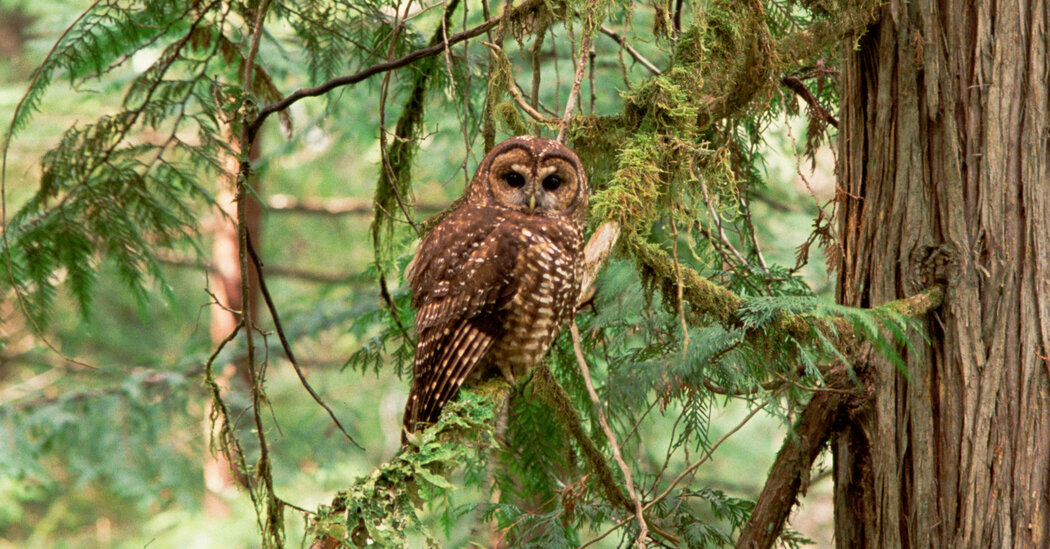In the ancient forests of the Pacific Northwest, the northern spotted owl, a rare and fragile subspecies of spotted owl, is being muscled out of its limited habitat by the barred owl, its larger and more ornery northeastern cousin. The opportunistic barred owl has been moving in on spotted owl turf for more than half a century, competing with the locals for food and space, outnumbering, out-reproducing and inevitably chasing them out of their nesting spots. Barred owls have also emerged as a threat to the California spotted owl, a closely related subspecies in the Sierra Nevada and the mountains of coastal and Southern California.
Crammed into marginal territories and bedeviled by wildfires, northern spotted owl populations have declined by up to 80 percent over the last two decades. As few as 3,000 remain on federal lands, compared with 11,000 in 1993. In the wilds of British Columbia, the northern spotted owl has vanished; only one, a female, remains. If the trend continues, the northern spotted owl could become the first owl subspecies in the United States to go extinct.
In a last-ditch effort to rescue the northern spotted owl from oblivion and protect the California spotted owl population, the U.S. Fish and Wildlife Service has proposed culling a staggering number of barred owls across a swath of 11 to 14 million acres in Washington, Oregon and Northern California, where barred owls — which the agency regards as invasive — are encroaching. The lethal management plan calls for eradicating up to half a million barred owls over the next 30 years, or 30 percent of the population over that time frame. The owls would be dispatched using the cheapest and most efficient methods, from large-bore shotguns with night scopes to capture and euthanasia.
Karla Bloem, the executive director of the International Owl Center in Minnesota, is conflicted over the prospect of killing one species to protect another. “The concept of shooting birds is awful — nobody wants that,” she said. “But none of the alternatives have worked, and at this late date no other option is viable. Extinction is a forever thing.”
Bob Sallinger, the executive director of Bird Conservation Oregon, agreed but emphasized that the culling must complement the restoration and preservation of the few remaining old-growth forests. “The science clearly shows that you must both protect and increase habitat and remove some level of barred owls if the northern spotted owl is to have a chance of survival,” he said.
The agency’s plan, outlined last fall in a draft report assessing its environmental impact that is due for final review this summer, has pitted conservationists, who say it will benefit both species, against animal supporters, who consider the proposed scale, scope and timeline unsustainable.
